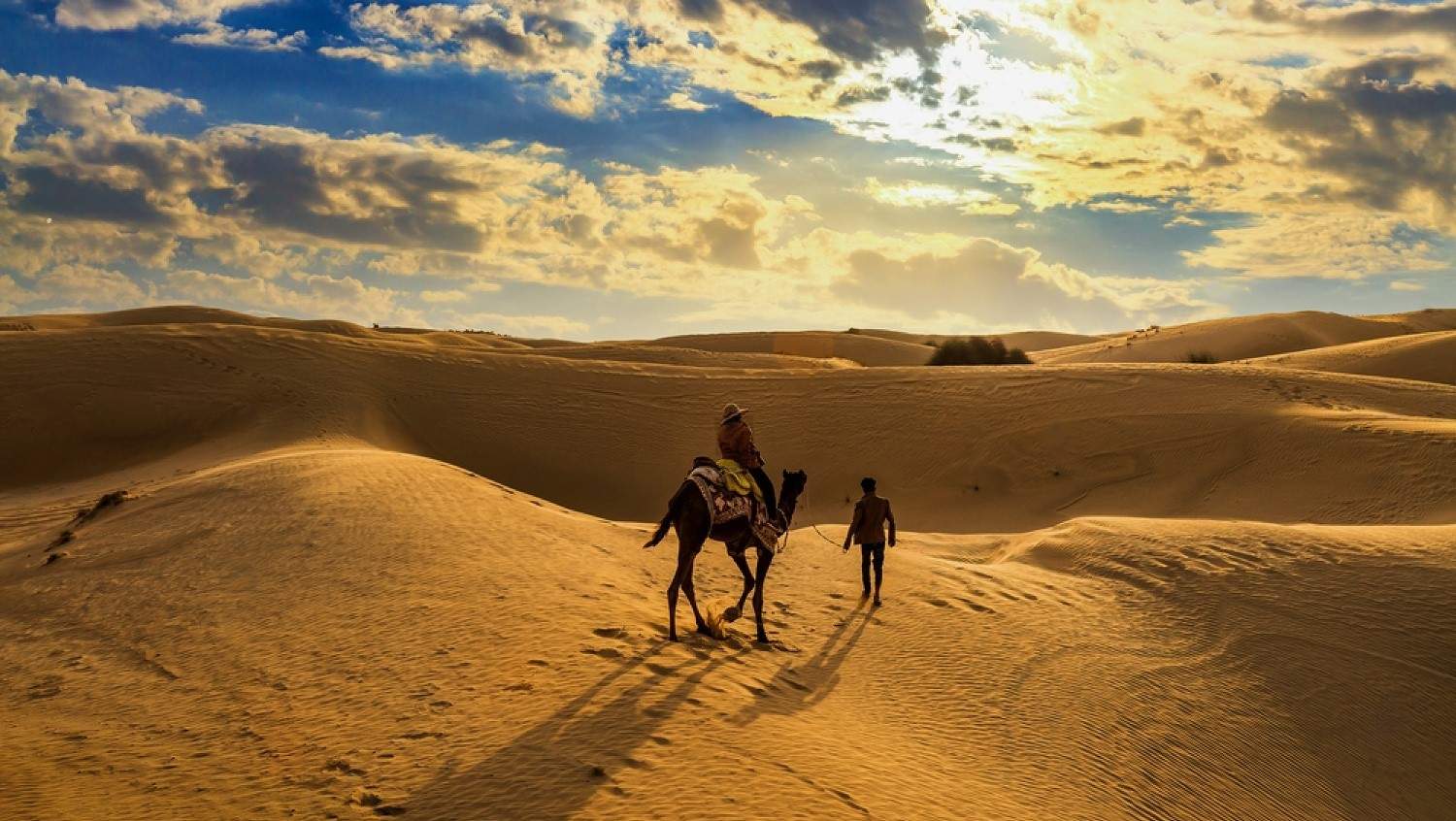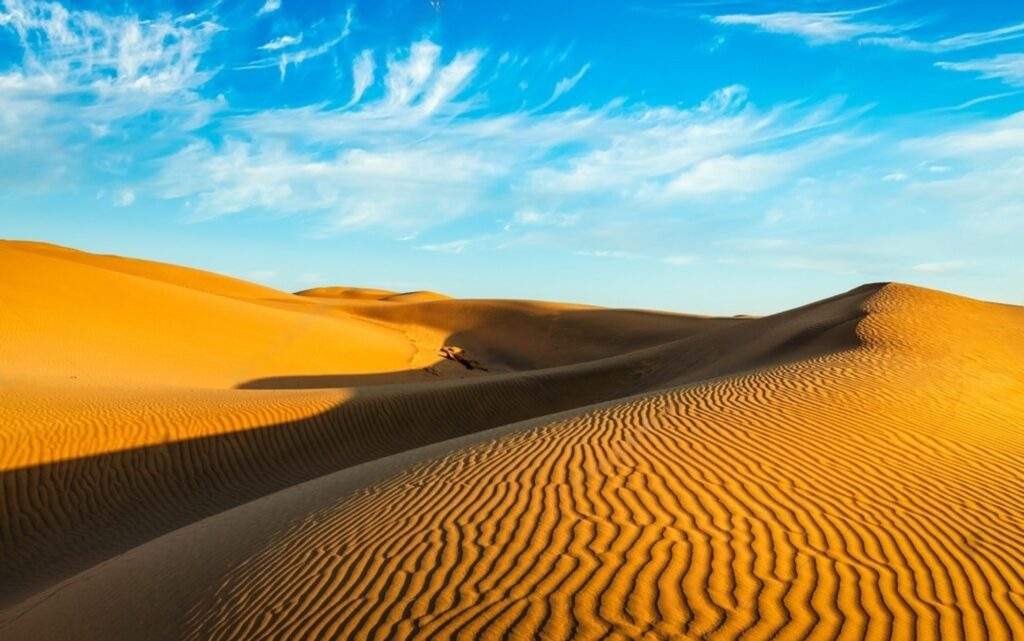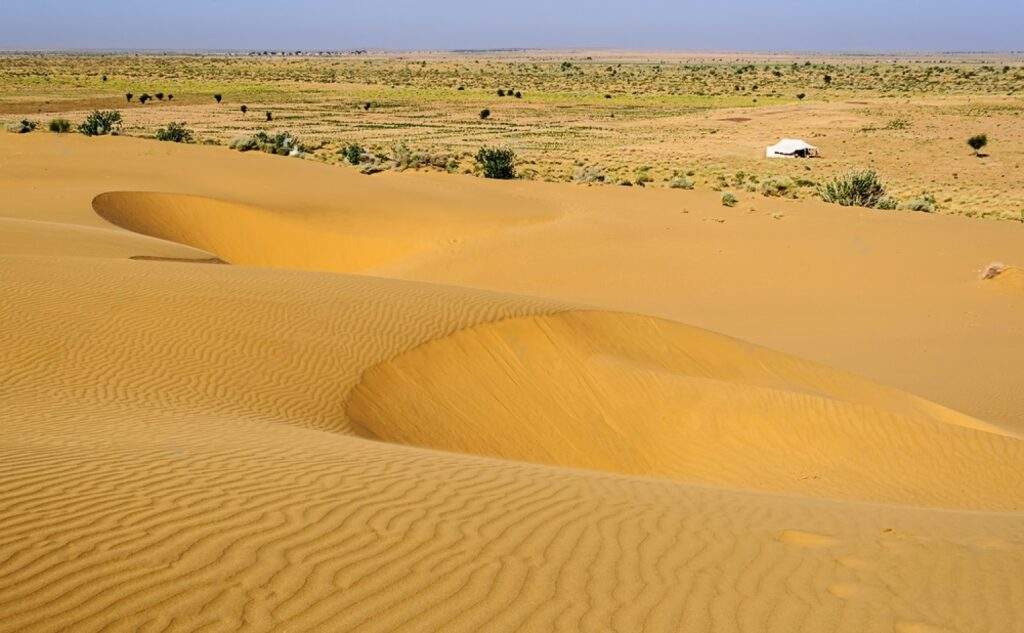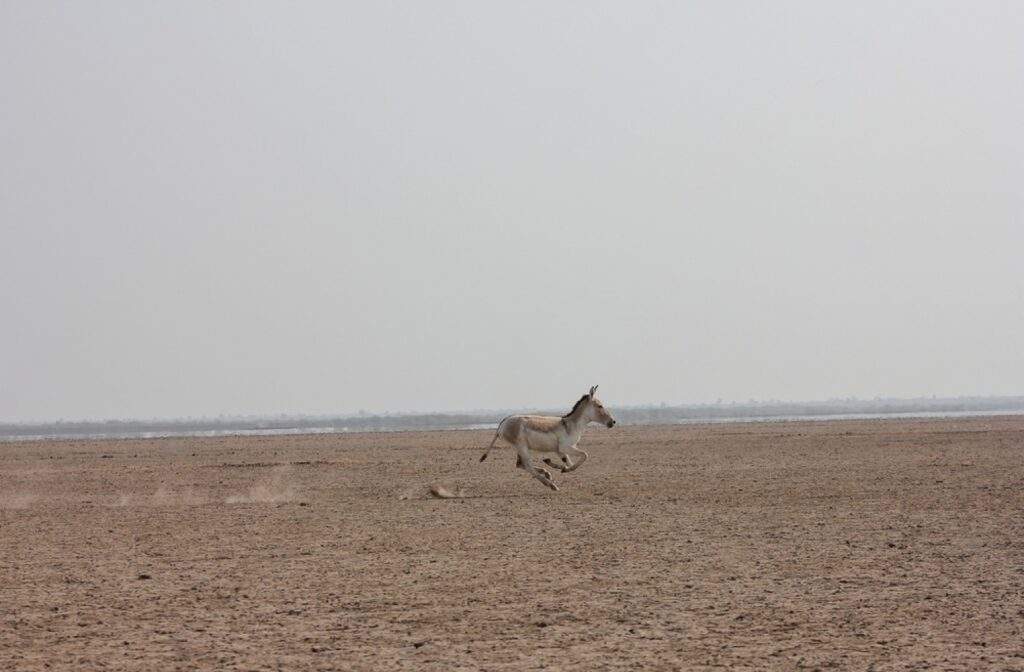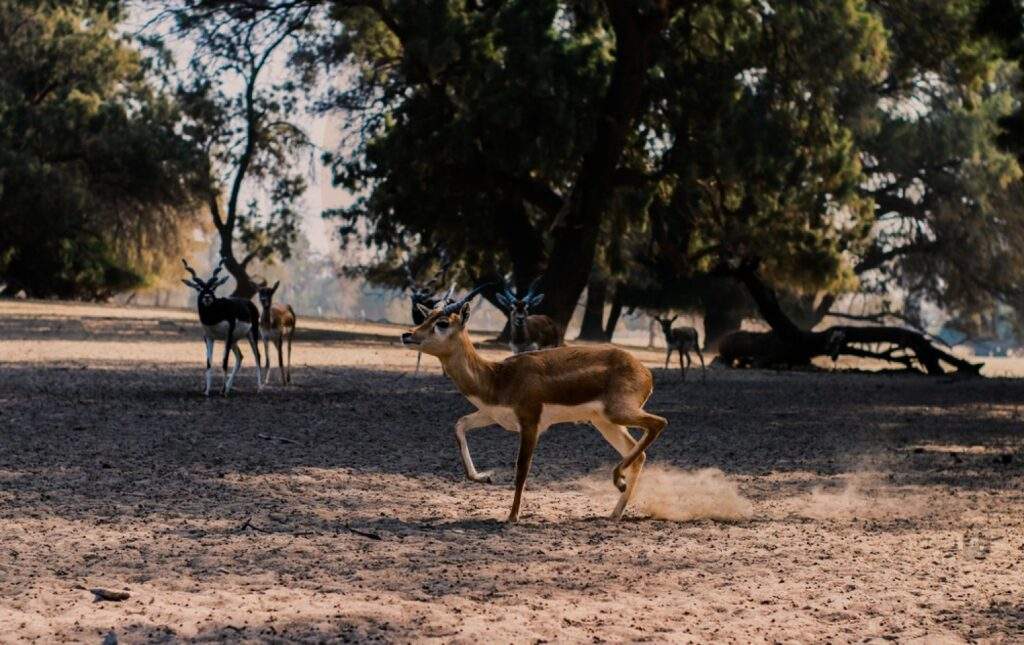The Thar Desert: the Great Indian Desert
India serves as home to many desert fauna, each showcasing distinct ecological communities. The largest Thar desert in India extends from the state of Rajasthan in northwest India to Punjab and Sindh province in Pakistan. The western, southern, and northwestern parts of the subcontinent are the major arid regions of India.
Geography of Thar
Also recognized as the Great Indian Desert, this dry area spans approximately 92,200 square miles and comes on 7th no. on the list of the world’s largest deserts. The name Thar originated t’hul, a phrase for sand ridges characteristic of this desert. About 10 of the Thar Desert consists of dunes, whereas the remaining comprises crisp rocks, beds of dry salt lake, and pastures. The Indus River creates a border in the west of the desert. Thar is an arid semitropical region because of the monsoon that carries rainfall to the area in the rest of India. The site has extreme temperatures that rise from freezing in winter to 122 degrees Fahrenheit in summer.
The Thar Desert spread to the northeast between the Aravalli hills. It also extends to states like Kutch and Punjab. Vast shifting dunes are spread over most of the desert, receiving sediment from the alluvial plain.
The Luni River is integrated as the only river in the desert. Rainwater is limited to 4 to 20 inches per year. Most of the rain occurs from July to September. Kuchaman, Sambhar, and Didwana saltwater lakes are situated in the Thar Desert. Phalodi and Pachpadra are saltwater lakes in Rajasthan.
The maximum water in these lakes comes from rainfall. This water evaporates during the dry time of the year. Salt is obtained by the process of weathering rocks in the area. The soil of Rajasthan remains dry for most of the time. Fast-moving winds blow the desert soil. These winds deposit some soil on fertile neighbouring land and drain some sand dunes of the desert. The “Indira Gandhi Canal” is the source of fresh water in the desert. The length of the Indira Gandhi Canal is 649 km. The Indira Gandhi Canal is built to prevent the desert from spreading to productive zones.
There are some homegrown tree species in the desert. This species is rising at a slow rate. Acacia species have shown to be beneficial for afforestation in desert areas, and Jojoba is also a promising plant species.
Protected areas in the Thar Desert, India
Desert national park
Desert National Park in India is spread over 1211 square miles. This national park represents the desert ecosystem. The desert national park consists of 44 villages where a wide variety of fauna are found, such as chinkara, Bengal fox, wolf, blackbuck, etc. Large-scale fossil tree pops in this park tell about the desert science history.
Tal Chhapar Sanctuary
Tal Chhapar Sanctuary, spread over an area of 2.7 square miles, is in the Shekhawati area of the Churu district, 210 km away from Jaipur. The sanctuary is home to a variety of creatures such as fox, blackbuck, caracal, etc.
Sudha Mata Conservation Reserve
It is spread over 45.36 square miles. It is situated in the Jalore district.
Protected areas in the Thar Desert, Pakistan
Nara Desert Wildlife Sanctuary
Nara Desert Wildlife Sanctuary is spread over 24 square miles, and this wildlife sanctuary is situated in the Mirpurkhas district. This sanctuary has the largest population of endangered crocodiles.
Run of Kutch Wildlife
Run of Kutch Wildlife This sanctuary has 112 bird species, 20 reptiles, 30 mammal species, and 22 plant species. It is located in the Badin district.
Lal Suhanra Biosphere Reserve
Lal Suhanra Biosphere Reserve and National ParkJaypal are spread over an area of 254.02 sq. It also includes the cholisthan area of the grated Thar Desert.
Biodiversity
The sandy gravel plains are spread across the region in the region. Human culture, vegetation, and animal life are richer than in other deserts due to the ecosystem and diverse habitat. There are 23 species of lizards and 25 species of snakes present in the Thar Desert. Wildlife species like Chinkara Indian, Wild Ass, and Blackbuck, which are extinct in other parts of India, are found in large numbers in this desert. The desert serves as a shelter for 141 different species of migrant birds such as eagles, falcons, and vultures. Indian peacocks are found here in large numbers. Peacock is the national bird of India.


